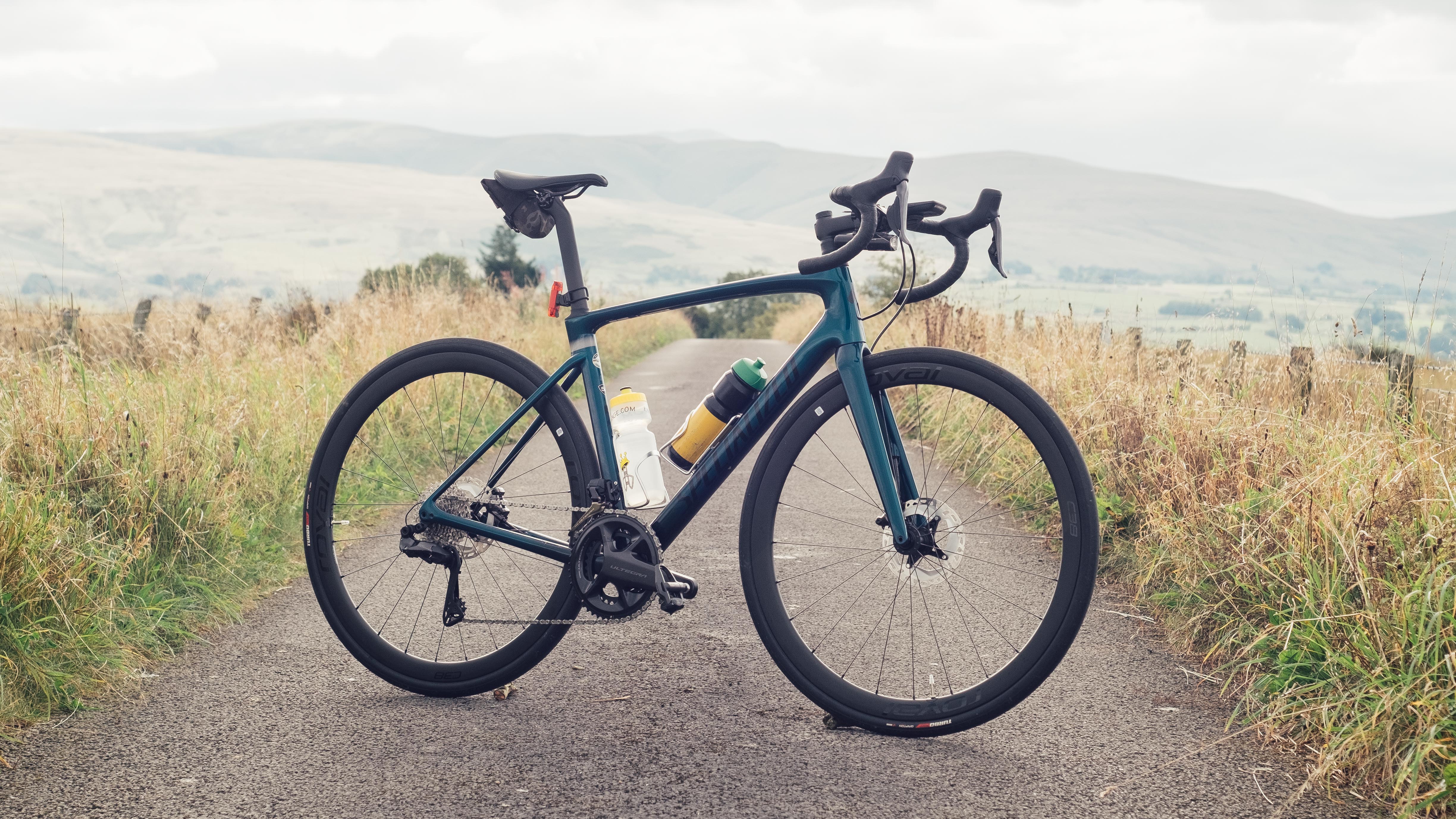Cyclingnews Verdict
Fast, wonderfully smooth, but lacks mudguard mounts and is more expensive than its peers
Pros
- +
The Future Shock is genuinely brilliant
- +
Seatpost flex makes long rides a breeze
- +
Race levels of stiffness and power transfer
Cons
- -
No mudguard mounts
- -
Difficult to work on
- -
Expensive
You can trust Cyclingnews
A decade or so ago the Specialized Roubaix was seen as something of the early retiree's option, with its squishy ‘Zerts’ inserts in the forks and seatstays aiming to provide a certain level of cush and comfort. While it may well have had racing success at the highest level, including at the race after which it was named, it never was really seen as a ‘proper’ race bike (with a heavy emphasis here on my part on those inverted commas).
Roll on to the present day and I’d wager that the majority of those familiar with the Specialized Roubaix still don’t view it as a race option, instead mentally consigning it firmly to the pile labelled best endurance road bikes. While I think this is perhaps an unfair distinction, which I’ll get into, I would also argue that with one minor tweak this could easily be one of the best road bikes for the sort of riding that most of us do, which is bombing around on poorly maintained backroads to avoid traffic.
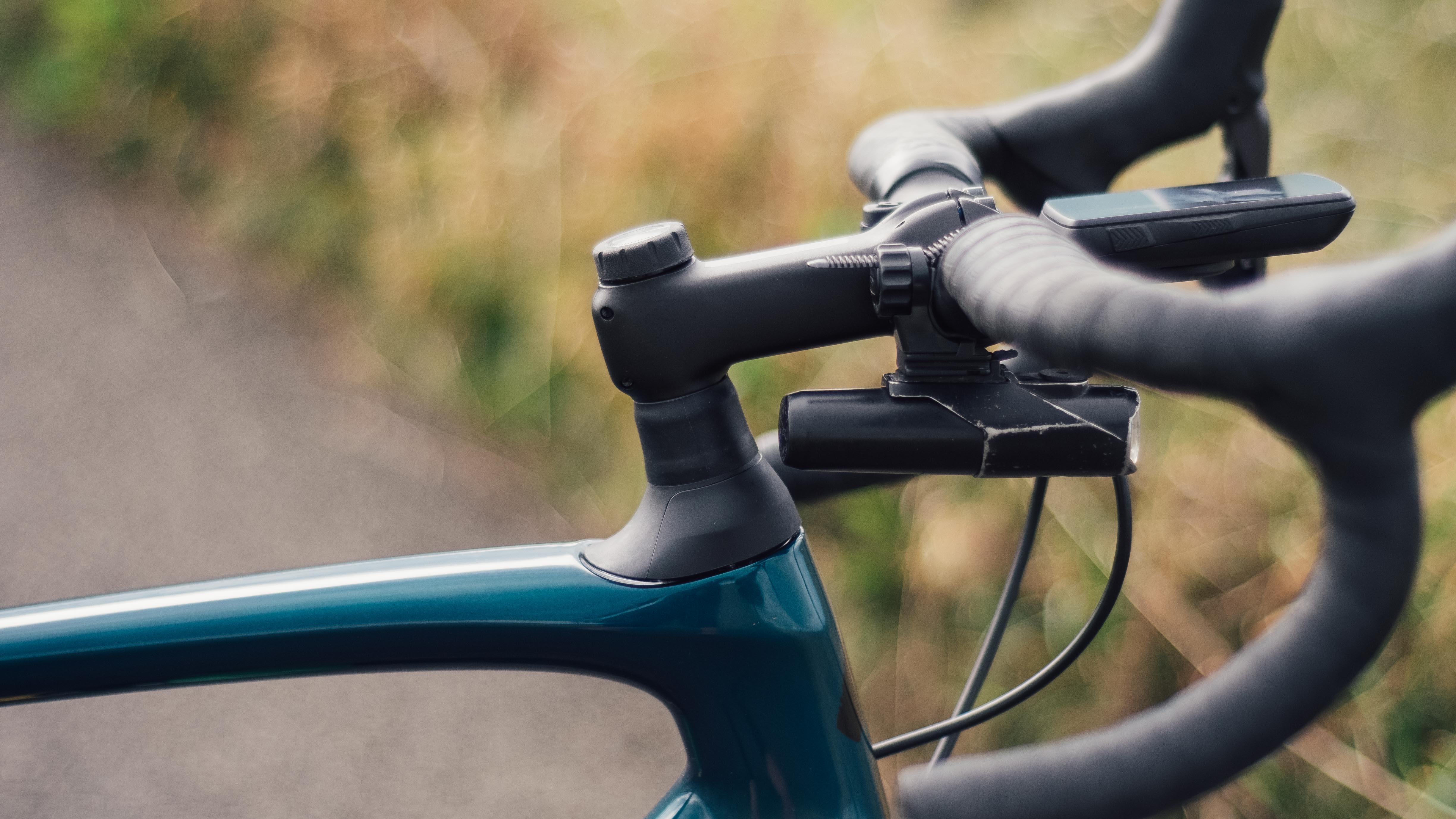
Design and aesthetics
Cards on the table here, I don’t hugely like how the important parts of the Specialized Roubaix look. I understand the way they look, given the internal mechanics, but that doesn’t mean I have to be fond of the visuals. The upper portion of the seatpost is much deeper above the seatstay junction to allow room for the seatpost to flex, thanks to the lower clamp point, but this could easily have been achieved with a more gradual curve, or even a seatpost with a subtle cutout for the rear wheel - something that would also likely have aerodynamic advantages too.
The headset-stem area too isn’t the most visually appealing; the large baseplate is a little clunky, and having a rubberised sleeve around where would ordinarily be a spacer stack looks odd whichever way you cut it, as does having a knob atop the stem in place of the traditional top cap. When you take a look at the user manual though and see the headset area required four dedicated pages it’s not a great shock that it’s looks a little different from the norm. Plus, as we’ll get onto later, the performance benefits do outweigh the visual downsides.
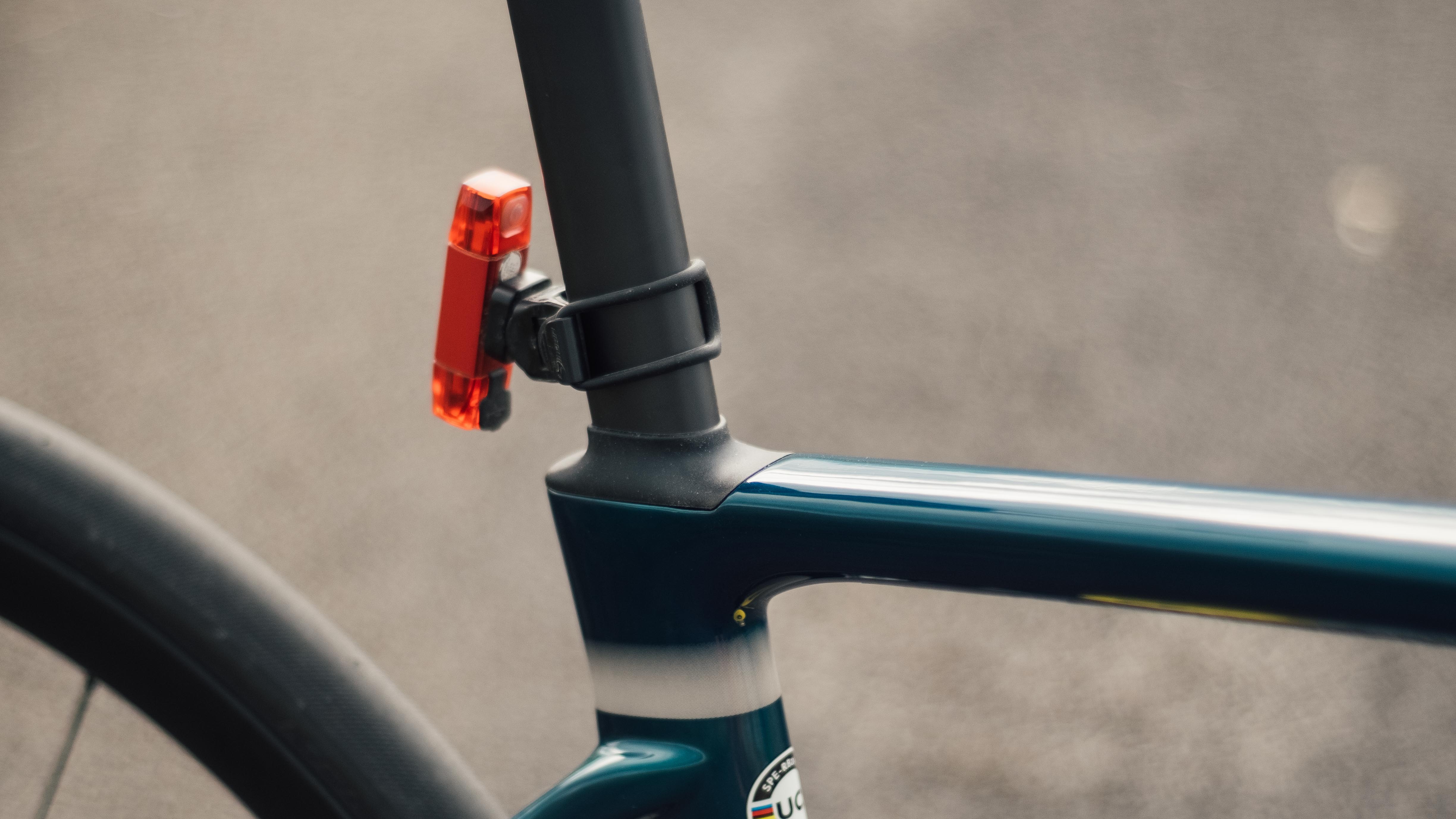
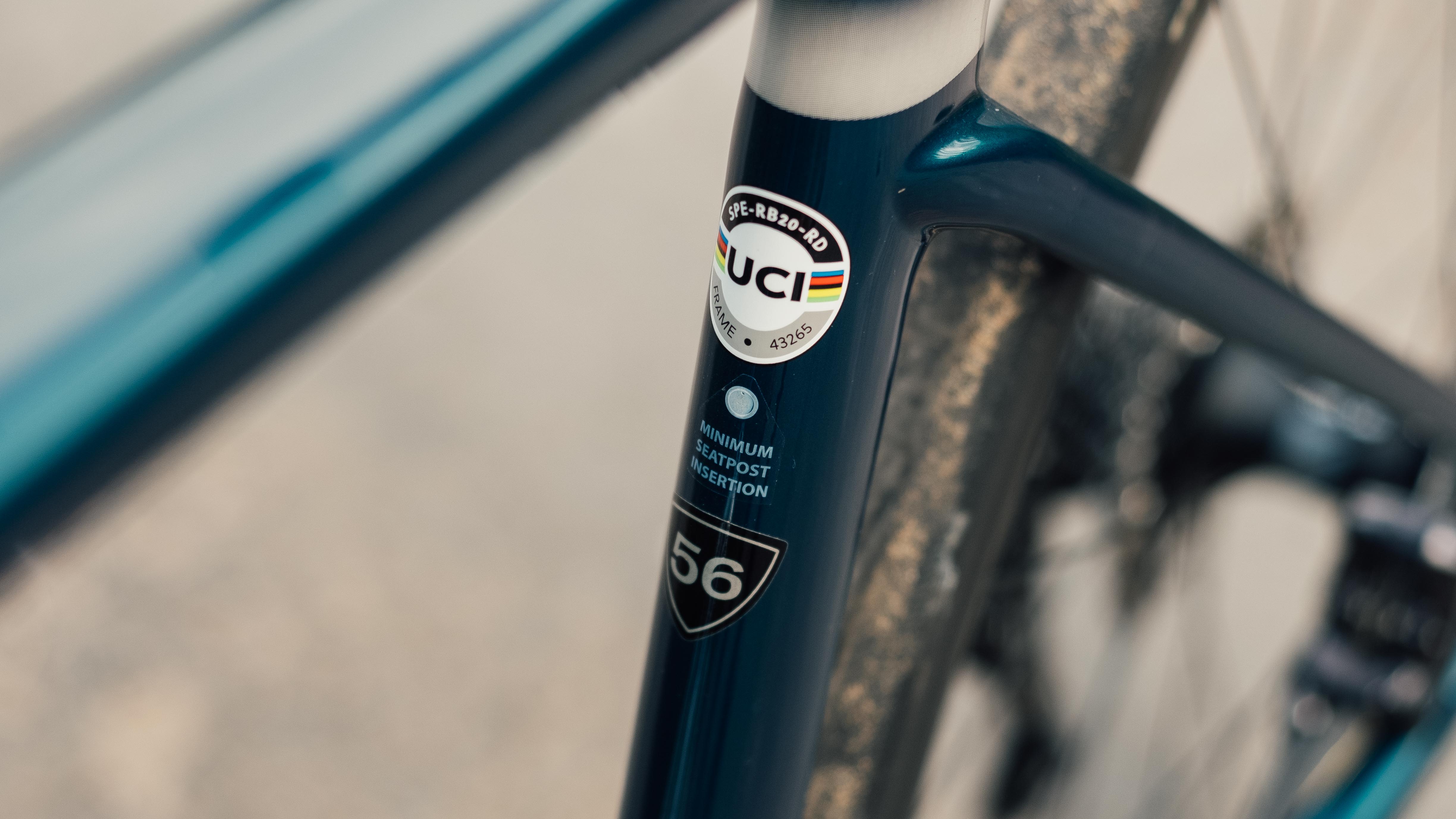
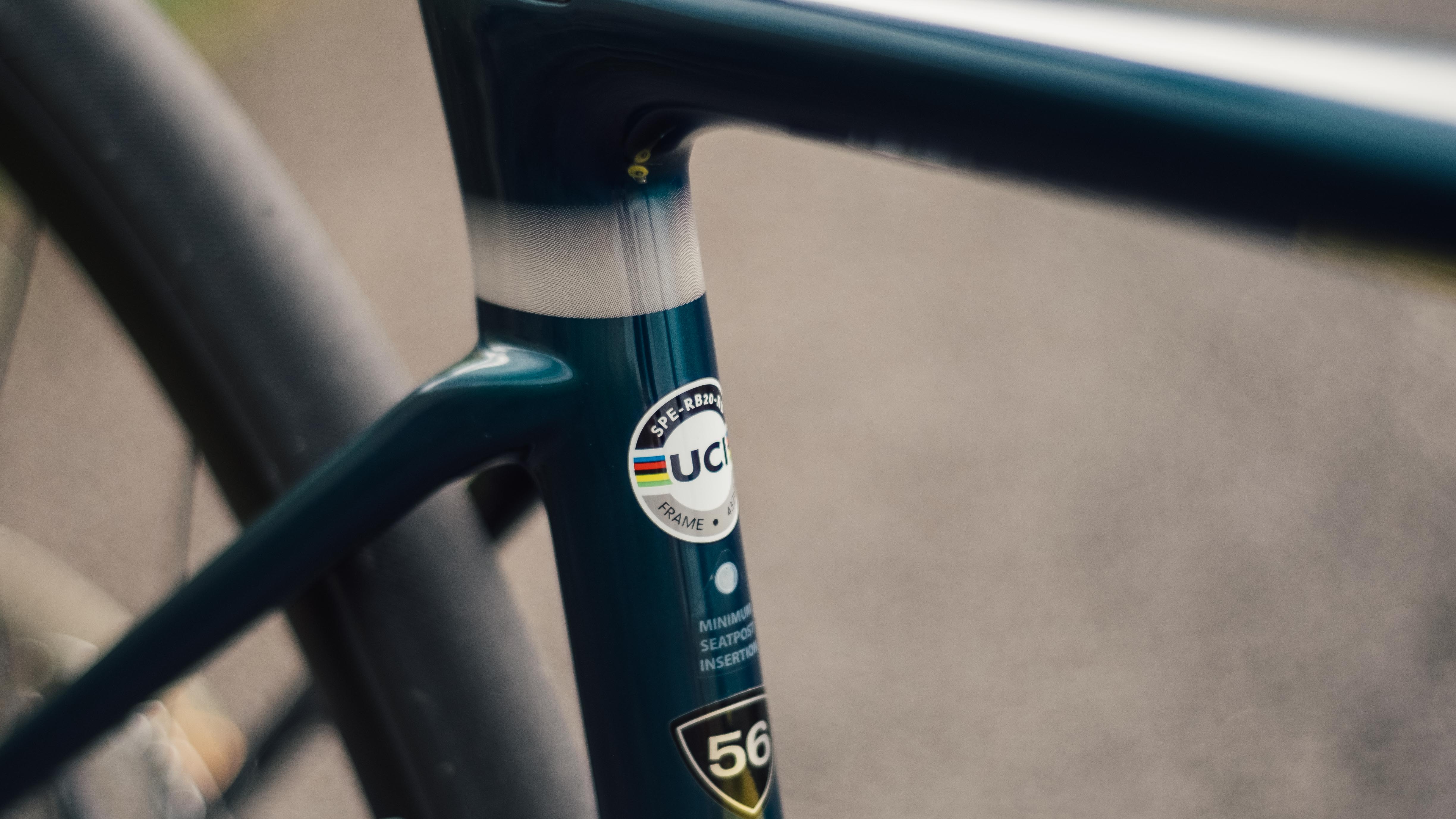
Apart from these two areas, the Roubaix Expert is actually a very good-looking bike, especially in this metallic blue colourway called ‘Teal Tint/Ice Papaya/Black Reflective’. Papayas are not native to the Lake District, but I’m almost certain they aren’t blue, but that’s by the by. The tube shapes, and particularly the sloping top tube, are reminiscent of both the Specialized Tarmac SL7 and the new Allez Sprint, which does sprinkle a more racy aesthetic into proceedings than Roubaix models from years gone by, specifically the pre-future shock models.
The Hoverbar is likely something that will split opinion visually, as risers on a road bike are far from the norm, and are rare on gravel bikes too. Personally, I like the look, and the fact it adds an additional chunk of stack. If you’re after a more aggressive position then you can swap quite easily to a flat bar as the cabling and hoses are all external until they hit the frame.
There are some reflective details too, such as a strip at the seat clamp area. It’s not overly subtle and draws the eye to what I already thought of as a bit of a clunky point on the frame so I could have done without this, but it’s not like the bike lives or dies on the strength of a strip of silver.
A word on maintenance too: This has not been a long-term test bike, and as such, I haven't had to contend with dismantling the future shock. Looking at the exploded diagram it fills me with a bit of trepidation, and I'm a pretty handy mechanic.
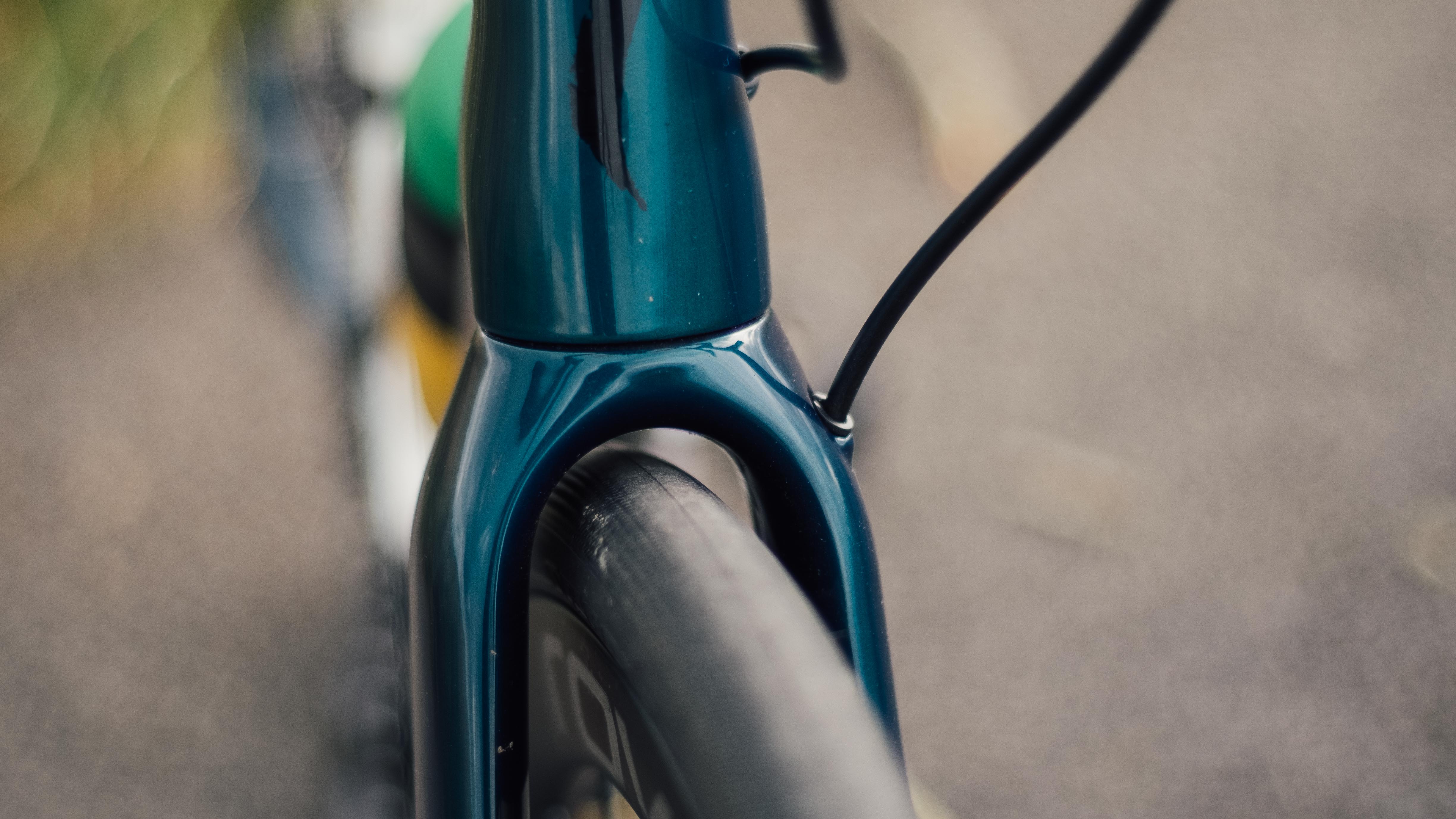
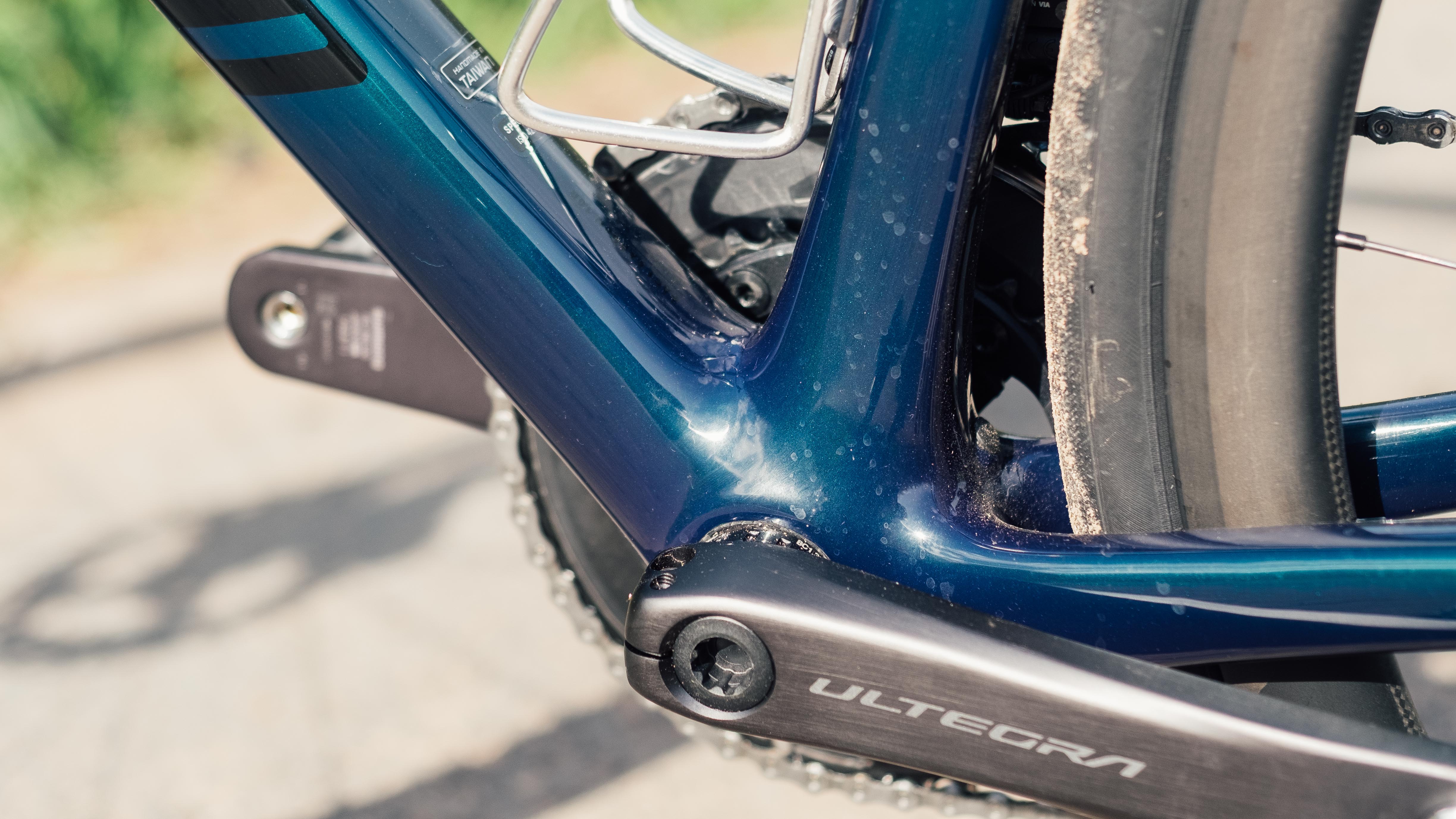
Performance
Earlier in the year I spent some time on the Specialized Allez Sprint, which has functionally the same geometry as the Specialized Tarmac SL7. There are certainly similar characteristics to the way all three of these bikes handle, but the Roubaix is definitely less racy. I am reluctant to use words like ‘relaxed’ to describe the ride feel, because the Roubaix is certainly no slouch, but in relative terms the geometrical difference between the two framesets does create a ride character more attuned to long days out than absolutely flat out racing.
Comparing the Tarmac and the Roubaix one can see they have a near identical wheelbase and head angle, and this does result in a feedback at the bars that is nearly identical. If you need to quickly throw the bars one way or another the bike does respond very quickly indeed, but things diverge thereafter.
The Roubaix has a slightly lower bottom bracket (by 4mm), which makes the bike feel more stable and is possible (I hypothesise) because Roubaix riders are less likely to be pedalling through a tight apex and so the increased risk of pedal strike is negated. The main difference however is at the front end, with a full 50mm greater stack height before you take into account the additional height created by the hoverbar.
Being noticeably more upright does make the bike feel like less of a racer, no matter how much Specialized claims this is a race bike. Thanks to the additional stack I found myself using the drops, or with forearms horizontal behind the hoods a great deal more than I would on something like the Allez Sprint or the new Canyon Ultimate, where the lower front end allows a more racy position without being deliberate about it.
I am, like many many of us (I know you’re all out there), guilty of riding bikes that are too race oriented for the riding I actually do. After selling my first Canyon Ultimate I decided the perfect bike for long steady miles in the countryside and absolutely no racing was a Bowman Palace:R, a bike steadfastly designed without compromise for the cut and thrust of crit racing, and as such I often find myself rather uncomfortable using it for more than a couple of hours. The Roubaix, in comparison, is absolutely sublime.
Yes, the future shock is a little ugly, yes the enlarged seatpost junction area is a little clunky, but the ride quality that the underlying tech imparts on the bike as a whole is nothing short of miraculous. Being able to charge along on pretty poor road surfaces without having to worry about upcoming potholes means you can focus on a smooth power transfer, something that I was worried would be hindered by having bars that bob up and down, but the reality is that even with the adjustment knob wide open at ‘full squish’ you can sprint up hills without any noticeable impediment.
It’s not got the scalpel like finesse of a pure climbing bike, and when seated I tended to lock out the future shock as there was some bob, but generally I just left it wide open. You can see how much it works as you ride along, the rubber sleeve constantly compressing and rebounding, and it does genuinely reduce fatigue in your upper body.
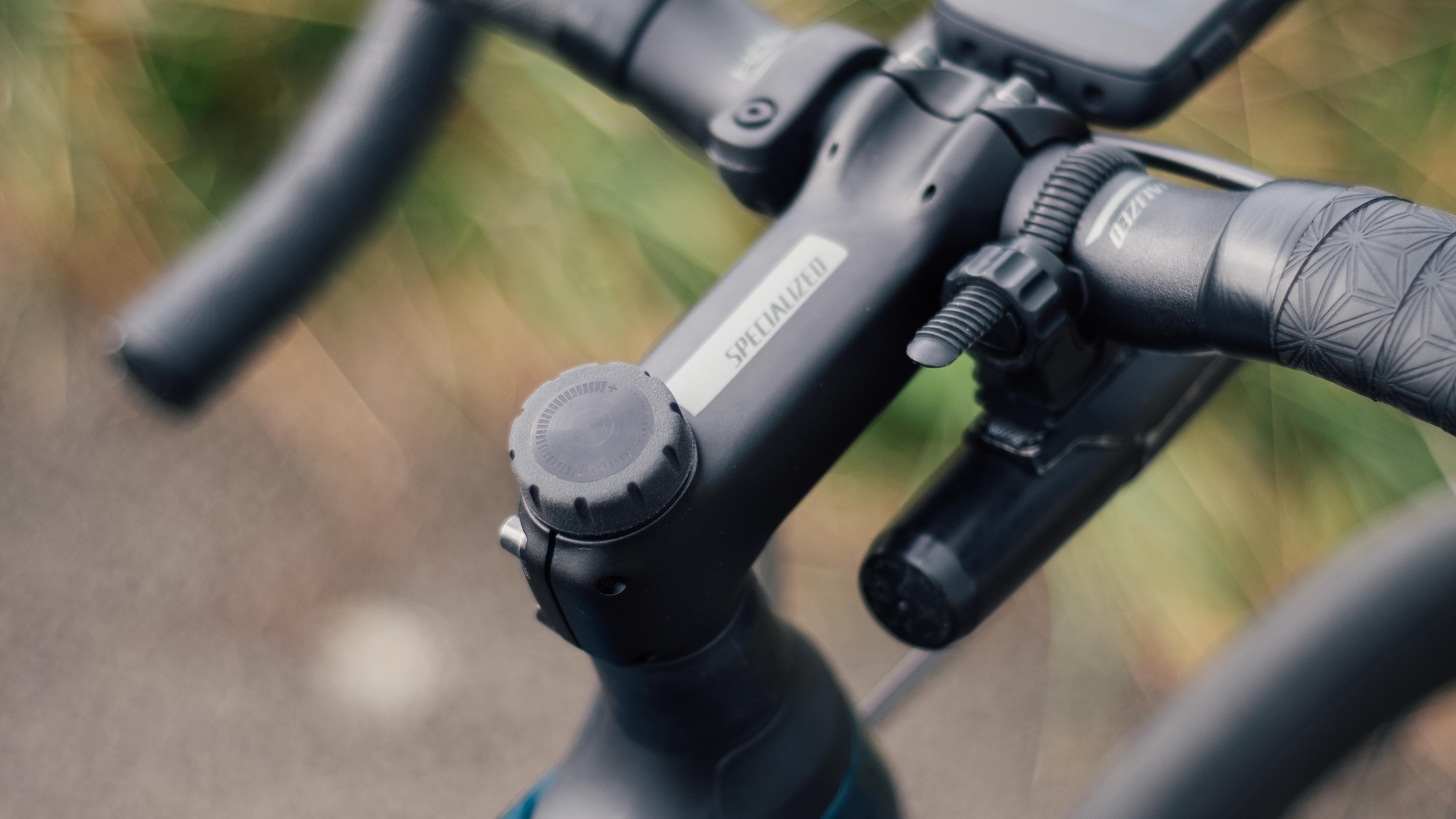
At the rear the compliance is more subtly delivered. The seat post is clamped lower in the frame with a wedge-based mechanism, so on the fly saddle height adjustments are a little more involved, and best done with one of the best bike torque wrenches to be honest, but the added effective exposure makes for a cushy ride. When your cadence exceeds your core's ability to keep your upper body stable there is a noticeable springy bounce, but this is only ever really the case when you accidentally shift into an easier gear.
My local riding, in and out of the Lake District national park, is bedevilled by cattle grids. Normally these are things of dread, ready to pinch flat, ding your best road bike wheels, or at the very least provide an uncomfortable rattle. On the Roubaix, though they were so little bother that taking them no-handed was considered, and the first one resulted in an involuntary giggle.
While comfort is the big selling point of the Roubaix, the future shock has added handling benefits too. Watching it under heavy braking shows that it sags dramatically, and while it’s not a huge difference it does allow a certain percentage of extra braking power before I felt I had to start hanging my rear end off the back of the saddle. In cornering too, especially on the looser, broken tarmac, the ability of the front end to comply with the surficial imperfections definitely felt like it resulted in improved front end grip.
Finally, the marketing tag ‘smoother is faster’ is I think a lot more true than most, but not for the reason you might expect. Road bikes in general have been using wider and wider tyres, year on year, for some time now, with correspondingly lower pressures. There is a debate as to whether wider, lower pressure tyres offer lower rolling resistance, but in the case of the Roubaix, I definitely felt like I could run the 30mm Turbo Pro tyres (a very good option in their own right) at a higher pressure than I usually would as the frameset could take on the job of compliance rather than running the tyres at my usual, likely too-low pressures. This resulted in a corresponding increase in perceived speed, and a tautening of the ride feel.
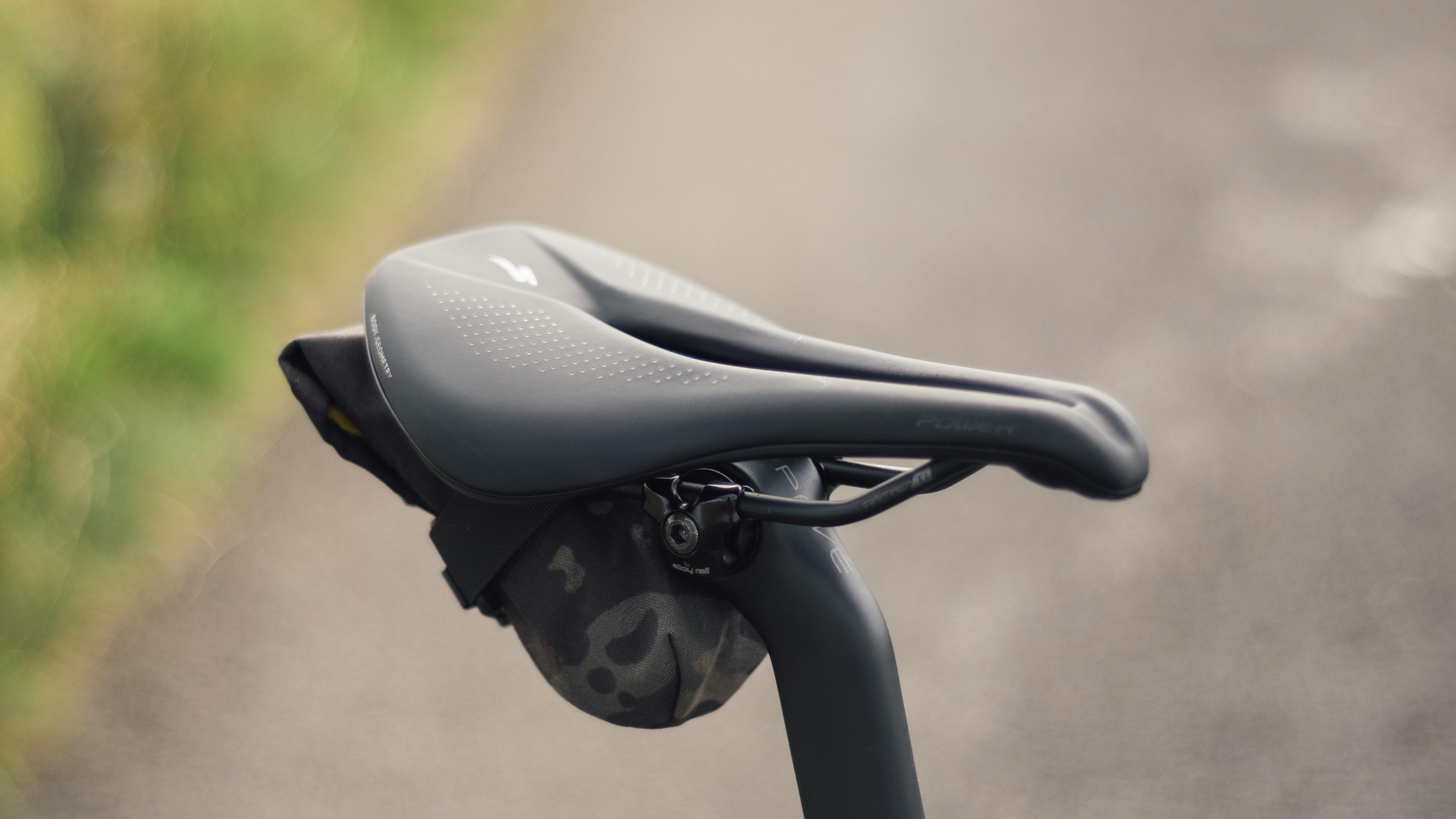
I did also try the Roubaix on gravel, thanks primarily to the phrase ‘gravel adjacent’ (coined, as far as I'm aware, by Matthew Loveridge over at Cyclist). This is a phrase that primarily springs to mind when I take a crit bike through the woods when I fancy a swim, but in this case, it seems a valuable test given that it can take 33mm tyres, the upper width limit for UCI-legal cyclocross tyres.
I’m going to respectfully disagree with the ‘gravel-adjacent’ moniker though. I don’t think the Roubaix has the right geometry for more than cursory adventures off-road, despite the tyre capacity. It doesn’t feel particularly stable on gravel tracks, and a head angle that mirrors that of a Tarmac doesn’t inspire much confidence in this terrain. It’s fine though, you’ll live, and it’s a damn site better than a Palace:R in this regard.
There is one glaring, almost maddening drawback to the Roubaix though, and that is the lack of mudguard mounts. This is a bike that absolutely screams ‘year-round use’ from the rooftops, and being able to fit a set of the best road bike mudguards would genuinely elevate this bike to something close to perfect. While Tarmacs will be quietly stowed away or mounted up to a turbo to be relegated to Zwift duties for four to six months, the Roubaix far more feels like a bike that will happily let you venture out in the depths of winter. The handling is more confidence-inspiring, which is perfect over wet, pitted roads, and the added comfort is even more of a benefit when it’s freezing. What it needs, though, is some eyelets. That’s it, that’s all it would take. The Enve Custom Road has them so there really isn’t any excuse not to, and it would really elevate things to a genuinely year-round performance machine. Yes, I’m aware clip-on mudguards exist but they are a solution to a problem that needn’t exist in the first place.
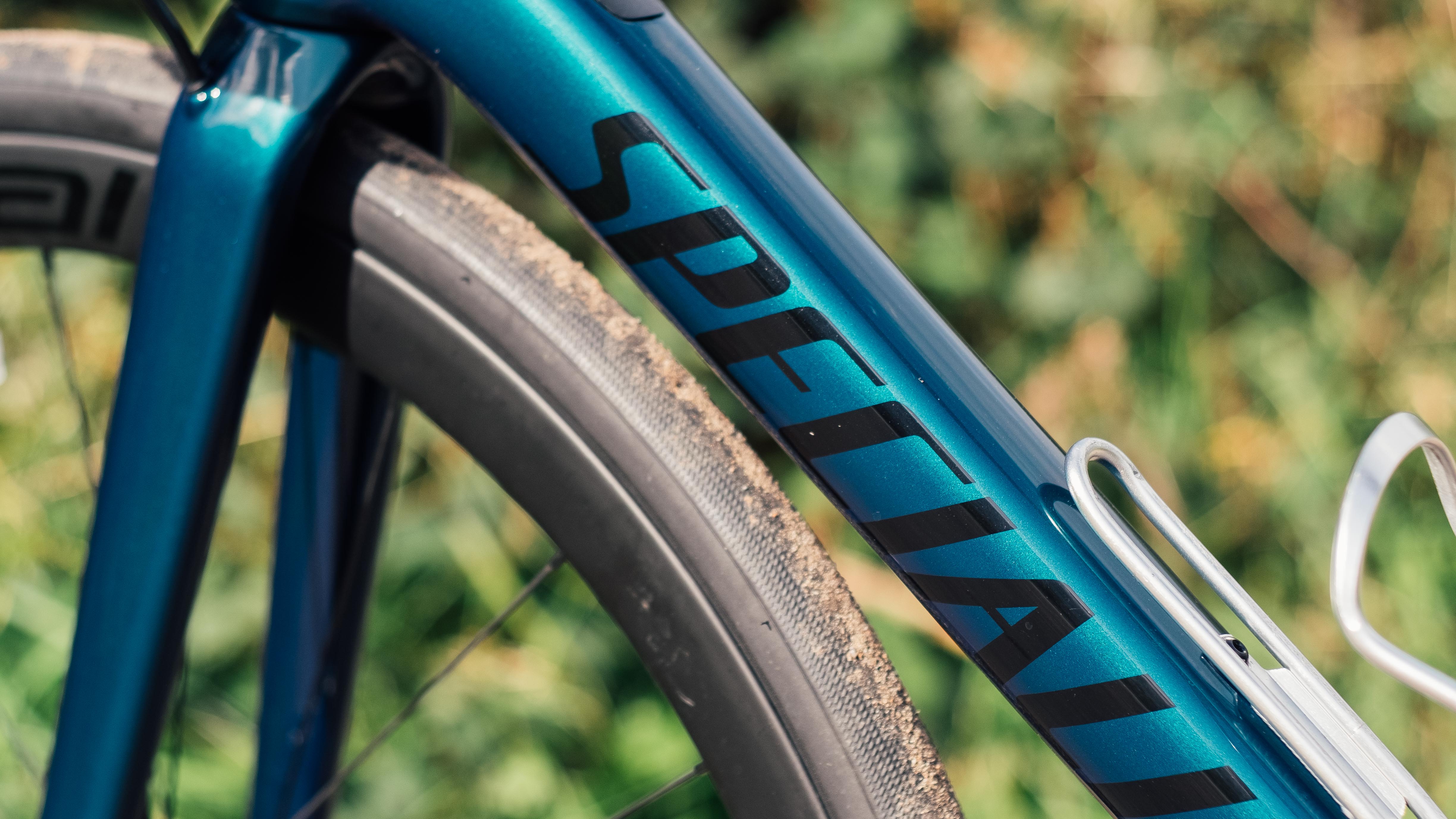
Value
At £7,250 this isn’t a cheap bike. For that you’re getting a full 12sp Ultegra Di2 setup, along with a set of Roval Rapide C 38 wheels shod with the aforementioned Turbo Pro tyres. While these aren't the brand's top-of-the-range wheelset they are in themselves just shy of a grand a set and are an excellent all-round option.
A portion of the slightly elevated price tag will naturally come from the additional tech included, mostly from the future shock and the slightly odd seat clamp (and moreover the additional R&D cost incurred to develop such things), but it’s certainly interesting that the Ultegra-equipped Tarmac SL7, which also has identical wheels, is the exact same price despite not featuring these bump-reducing additions.
Specialized has also gone direct-to-consumer of late, which usually makes bikes cheaper. The new Canyon Ultimate SLX features an Ultegra build that includes a power meter too for a full £800 less, and a build in the lower tier SL frameset also with an Ultegra and power combo for an astounding £2,300 less. This isn’t necessarily comparing apples with apples, but taking a 4iii single-sided power meter as a £350 bonus you’re looking at a £1,150 premium for the Specialized option. The added compliance is certainly brilliant, but I think that’s a hard number to justify on top of what are pretty similar builds.
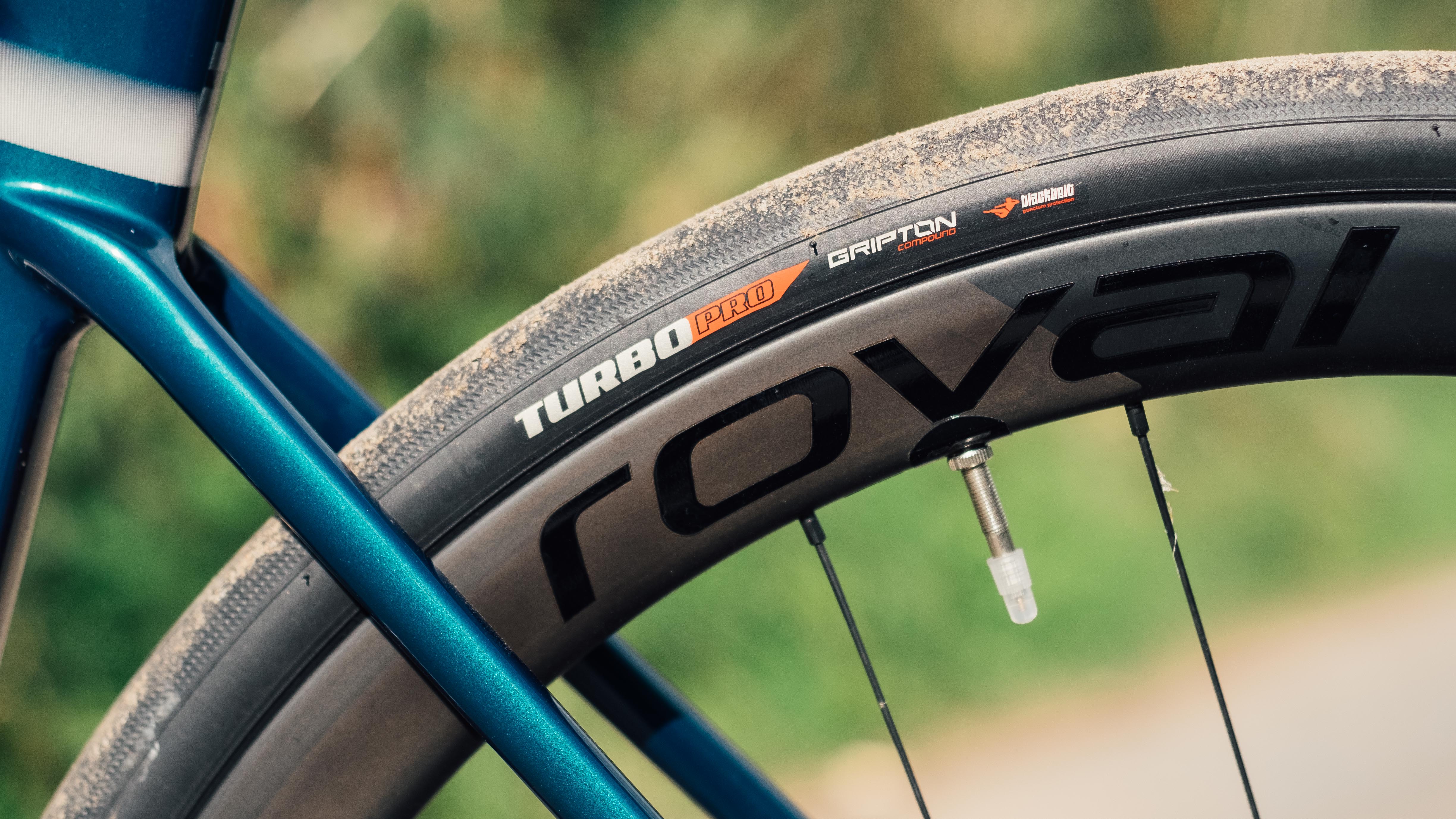
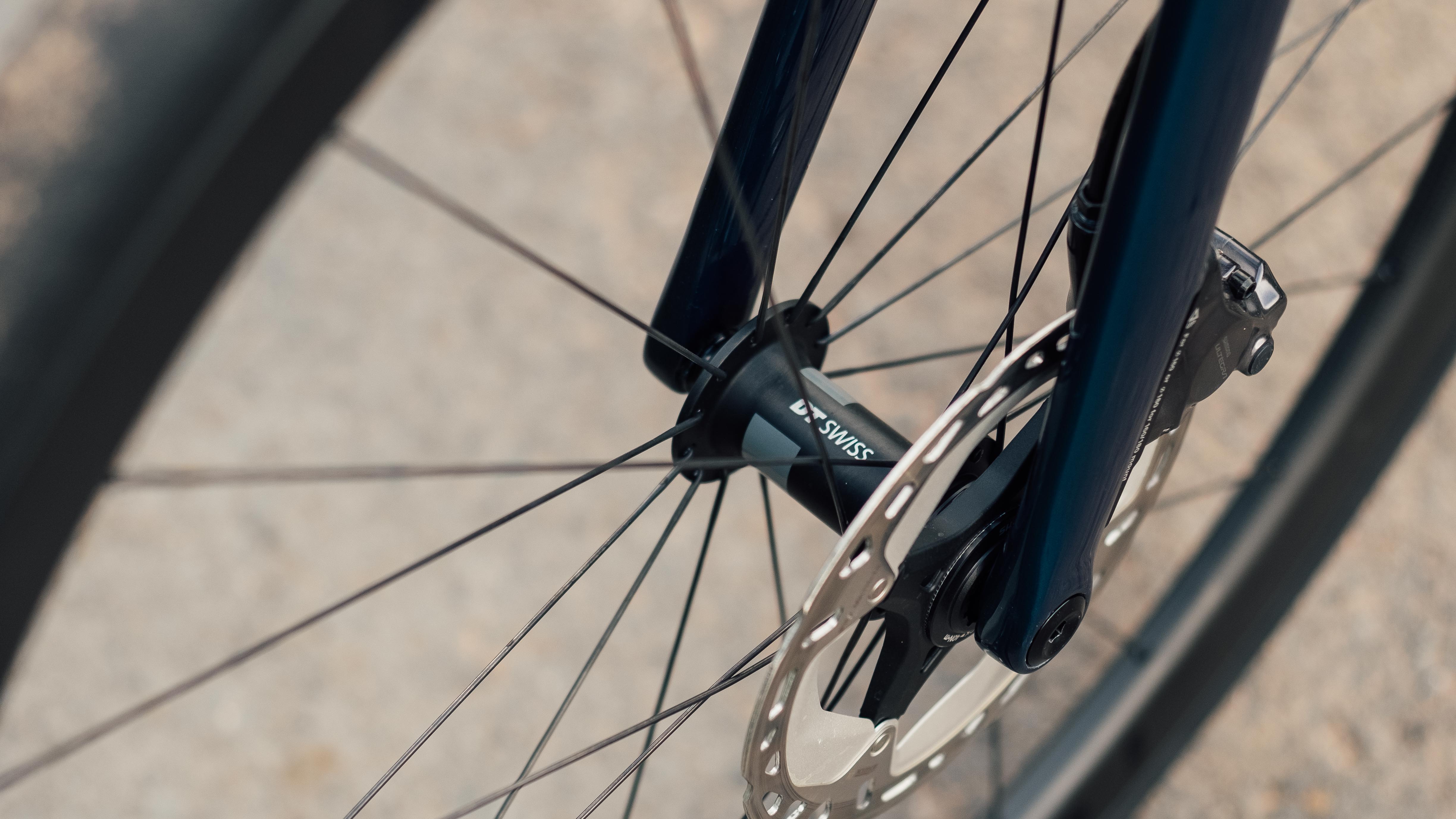
Verdict
Paris-Roubaix has always conjured up some dedicated tech, but Matt Hayman winning it on a standard aero bike was something of a watershed moment, and it certainly makes me wonder whether the Specialized Roubaix, despite the added compliance on offer for the cobbles, would actually be the bike of choice for the pros if they weren’t bound by sponsor commitments. Those with decent memories will recall Niki Terpstra opting to replace his first-gen future shock with a rigid unit, negating any benefit from the tech over the cobbles.
Race wins sell bikes, but how many of us are actually racing the bikes we own? What Specialized have created with this iteration of the Roubaix is an extremely good endurance road bike, one that will offer genuine gains in both comfort and performance for a great many riders, but the insistence on maintaining the duality between recreational performance riding, and UCI level performance for a single race holds it back from being truly great.
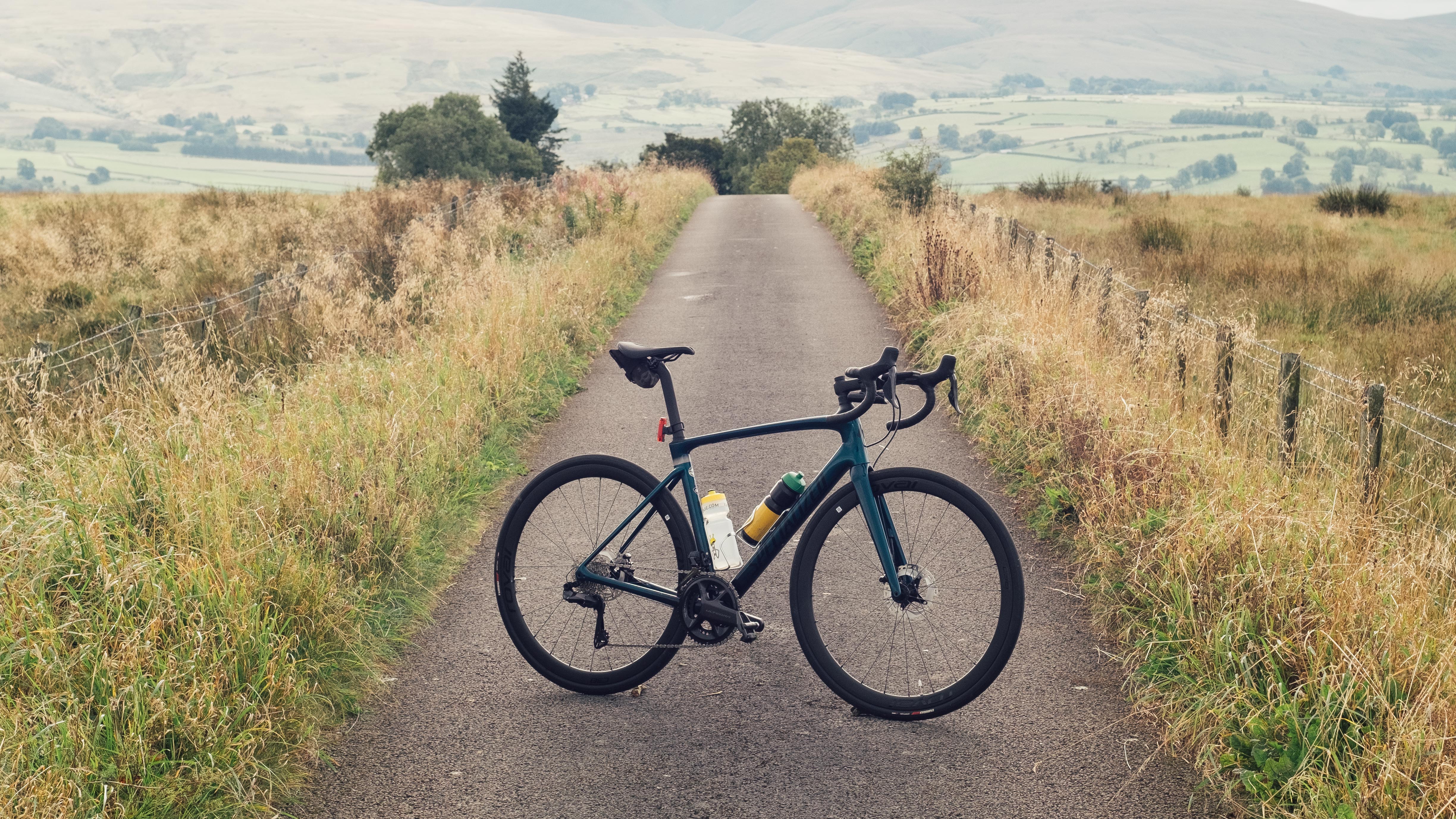
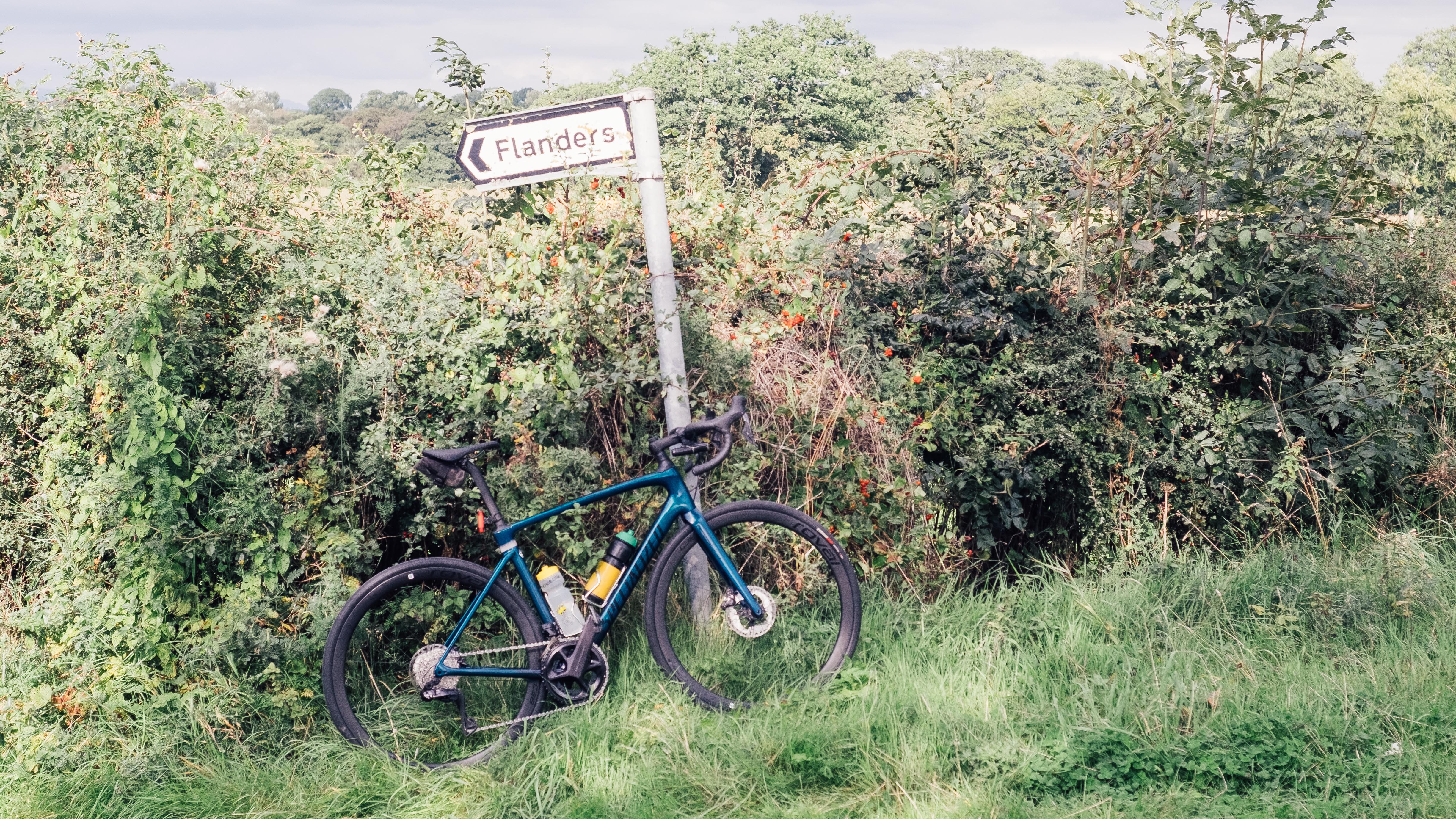
| Attributes | Notes | Rating |
|---|---|---|
| Design and aesthetics | Overall good, but the important bits of the frameset are, unfortunately, a little ugly | 8/10 |
| Build | 12sp Ultegra Di2 is very hard to fault, and the finishing kit is all decent too | 9/10 |
| Performance | The ride quality is sublime, and the handling is near perfect for broken backroads. No mudguard eyelets is sinful though. | 9/10 |
| Weight | Consider all the extras under the hood it's surprisingly svelte | 9/10 |
| Value | There is definitely a premium to pay over similarly, and even better equipped competition | 7/10 |
| Overall rating | Row 5 - Cell 1 | 84% |

Will joined the Cyclingnews team as a reviews writer in 2022, having previously written for Cyclist, BikeRadar and Advntr. He’s tried his hand at most cycling disciplines, from the standard mix of road, gravel, and mountain bike, to the more unusual like bike polo and tracklocross. He’s made his own bike frames, covered tech news from the biggest races on the planet, and published countless premium galleries thanks to his excellent photographic eye. Also, given he doesn’t ever ride indoors he’s become a real expert on foul-weather riding gear. His collection of bikes is a real smorgasbord, with everything from vintage-style steel tourers through to superlight flat bar hill climb machines.
